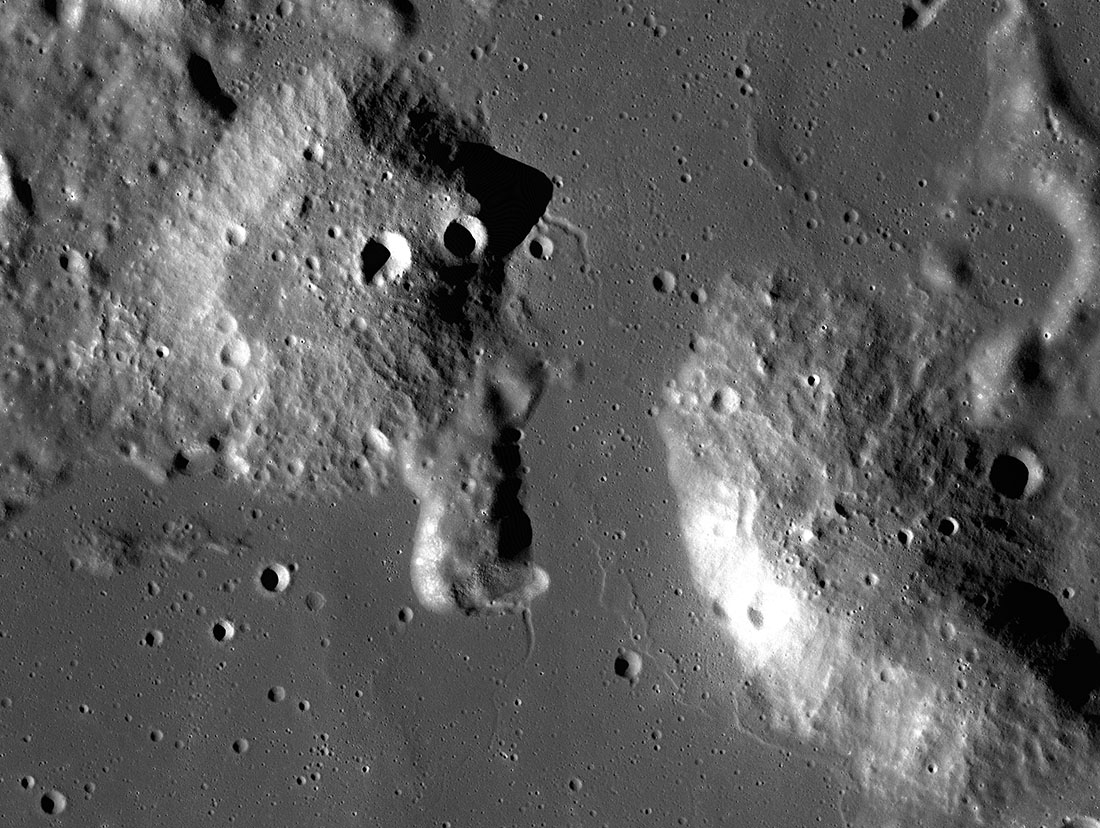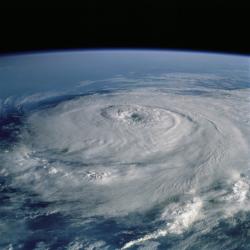UMD Astronomers on Team Selected by NASA for Moon Exploration Mission
The team will study a previously unexplored region that may hold clues to how the moon and other similar celestial bodies formed over time.
University of Maryland astronomers Jessica Sunshine and Sarah Valencia are on a team that NASA selected this month to explore one of the most enigmatic locations on the moon: the Gruithuisen Domes.

For decades, scientists have been drawn to the mysterious landform yet baffled by its inexplicable origins. Although there are theories as to why and how the Domes came to be, researchers have been unable to validate any of those theories without closer examination and better rock samples.
In 2026, astronomers will be able to tie their remote orbital observations of the Domes with real-time data from the lunar surface when NASA launches a new suite of research instruments called Lunar-VISE (Lunar Vulkan Imaging and Spectroscopy Explorer).
Sunshine, Valencia and the rest of the team led by researchers at the University of Central Florida will use the instruments to study the summit of the Domes as Lunar-VISE captures images and other data from the moon for 10 Earth days. A vast improvement in data quality over the tools from the Apollo missions 50 years ago or even in orbit today, the Lunar-VISE instruments will allow researchers to view the Gruithuisen Domes down to the centimeter level and gain a deeper understanding of these massive formations.
“It’s a bit misleading to call them domes. When we hear domes, we think of relatively small formations, but they’re actually really big—miles high and tens of miles wide,” said Sunshine, a UMD astronomy professor who previously served as the Deputy Principal Investigator for the UMD-led Deep Impact, a long and highly successful NASA mission that flew by two comets and carried out the first planetary scale impact experiment. Sunshine will serve as instrument scientist for the multispectral camera in the Lunar-VISE suite.
“The Gruithuisen Domes stick out prominently from the mare, or the surrounding flood basalt area that makes up all the dark regions of the moon,” added Valencia, a lunar petrologist (scientist who studies rocks) and postdoctoral researcher with the UMD-led Center for Research and Exploration in Space Science & Technology (CRESST) II. Valencia will serve as co-investigator on this mission. “The Domes really stand out because they look like really bright spots within the dark areas.”
Sunshine explained that this extreme visibility is what originally drew space researchers to the unusual lunar feature, even before humans first landed on the moon in 1969. Although scientists were aware of somewhat similar landforms on the moon’s surface, the steepness and overall shape of the Domes made them even more atypical. Sunshine is hopeful that this new mission will provide clues to how the Domes formed.
“From the existing research, we generally suspect that the Domes were formed by thick and silica-rich magma, similar to granite in composition,” Sunshine explained. “On Earth, the formations would need water and plate tectonics to develop. But these key ingredients don’t exist on the moon, so we’ve been unable to work out how they formed and evolved over time.”
With the Lunar-VISE project and the data gathered from it, Sunshine and Valencia hope to gain a better understanding not only of the moon’s formation but also of the history of the solar system – including Earth.
Other research goals for the team include observing how the rover carrying Lunar-VISE will modify the moon’s surface as it travels, learning more about how moon dust reacts over time, and identifying minerals and chemical resources in the unexplored region. The data collected and returned by Lunar-VISE’s instruments will also help future robotic and manned missions to the moon, especially as moon dust can damage spacecraft and equipment, posing hazards to astronauts.
“Even though the formal period of studying the data is relatively short after landing, lunar data has a way of living on,” said Valencia, who today still studies lunar rock samples obtained from the Apollo missions. “The information we gather on this mission will be archived to form the basis of our next trip to the moon and studied for years to come.”
###







